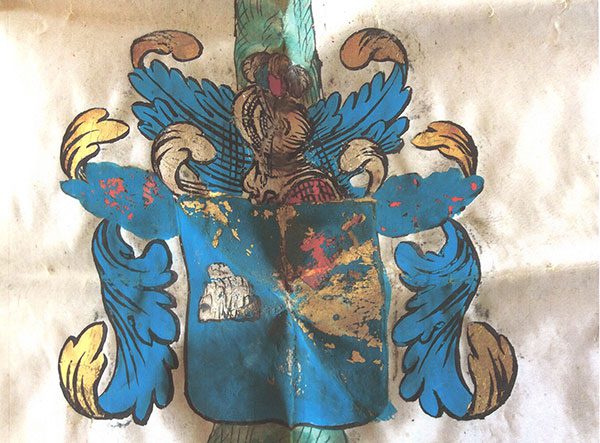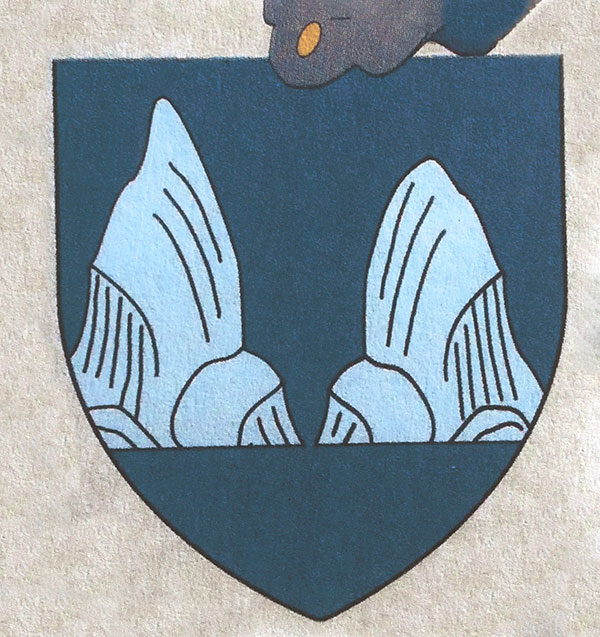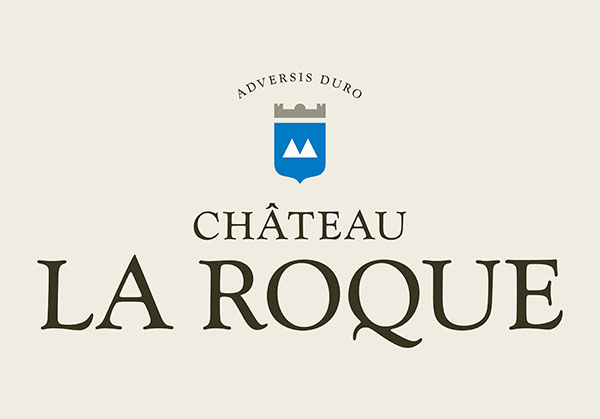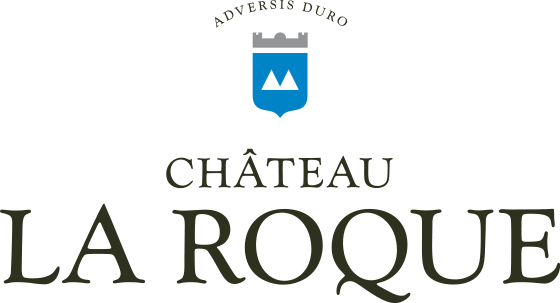HISTORY
In the eighth century, Château La Roque was at one of the crossroads of traffic routes between the Camargue and the Cévennes. The Benedictine monks tell us (see the cartulary of Maguelonne) of the importance of building a fortification in order to control the intersection of these roads. The château then belonged to the family of Bermont d’Anduze, who were dispossessed of it in 1229 by the French crown at the end of the war against the Cathars.

Coats of arms of the La Roques of the house of Couloubrines.
In 1259, two noblemen, the brothers Jean and Guilhaume de la Roque, became owners of the land and grew vines on the slopes of the hill which sheltered le Nanse (a farm).
In 1426, Firmin de La Roque acquired a glass works on the Couloubrine site, in the name of his family. He then brought a new dimension to the vine growing tradition: “the marriage between glass and wine”. This new dynasty of the “de La Roques of Couloubrine” ruled over the estate until the end of the 17th century.
A line of wine-growers have continued, until nowadays, to cultivate on this terroir those beautiful ripe fruits which give the wines of Château La Roque their unique character.
The blazon (coat of arms) and the “La Roque” gentlemen glassmakers’ motto are “azure with rocks argent placed fesswise and “Adversis duro”.

Coat of arms of La Roque, gentlemen glassmakers of the Languedoc “Azur with two rocks argent face to face”.

The identity of Château La Roque, a tribute to the history of our ancestors
Louis de La Roque, highly qualified to speak about all this as he was a member of the La Roque family of gentlemen glassmakers and was the author of the Armorial de la noblesse de Languedoc – Généralité de Montpellier published in Montpellier in 1860, carefully noted in the “La Roque” article, that the arms of his family were azure with rocks argent placed fesswise.
The noble family of La Roque (nobility of feudal extraction) seems to have been known from the 11th century onwards thanks to Hugues de la Roque who around 1090 married Guillemette, the daughter of the Vicomte de Nîmes and d’Alby and widow of the Vicomte de Béziers.
Then, in the 15th century, the La Roque family divided into three branches which spread into the Languedoc, the Auvergne and the Vivarais regions.
– The Couloubrines branch (whose origins are known from the 15th century onwards and which died out in the 19th century).
– The Mazel branch and later that of Montel (disappeared since the 19th century).
– The Vivarais branch (founded by Pierre de La Roque, in the 17th century), is the only one which currently exists.
Their noble status was maintained by M. de Bezons, Intendant of Languedoc, during the verification of evidence of nobility in 1668, 1669 and 1670.
The arms are surmounted with a Marquis’s crown. The origin of this crown seems to go back to the middle of the 18th century. According to “the Code of French Nobility”, the raising of a marquisate required three baronies with their castellanies united, granted by the king in return for a single act of homage.
The La Roque family have a single heraldic motto and several coats of arms. The motto “Adversis Duro” means “I face up to adversity” and relates to the arms referred to as “talking” (i.e. phonetic) which are the two rocks. According to the Catalogue des gentilshommes du Languedoc , repeated in L. de Roque’s Armorial du Languedoc, this first coat of arms is described in the following way: Azure (blue) with two rocks argent (white) placed fesswise. It also added: alias azure with a heart and two pine cones of the same (colour) attached to the heart by two cords gules (red). The last description is the one by Saint-Quirin and is certainly earlier than the first. The two rocks were borne by the La Roques of the Languedoc (branches died out).
Another coat of arms has existed since a certain Pierre de La Roque (17th century) who moved to the Auvergne and then to Vivarais and who wanted to distinguish himself from the other branches: Or (yellow) with in its centre a heart gules (red), to which two pine cones vert are attached at the ends of two cords of the same colour, with a chief (top part of the escutcheon) charged with 3 honey bees sable (black bees) sewn with silver thread. The following was also added: alias azure with two rocks placed fesswise.


